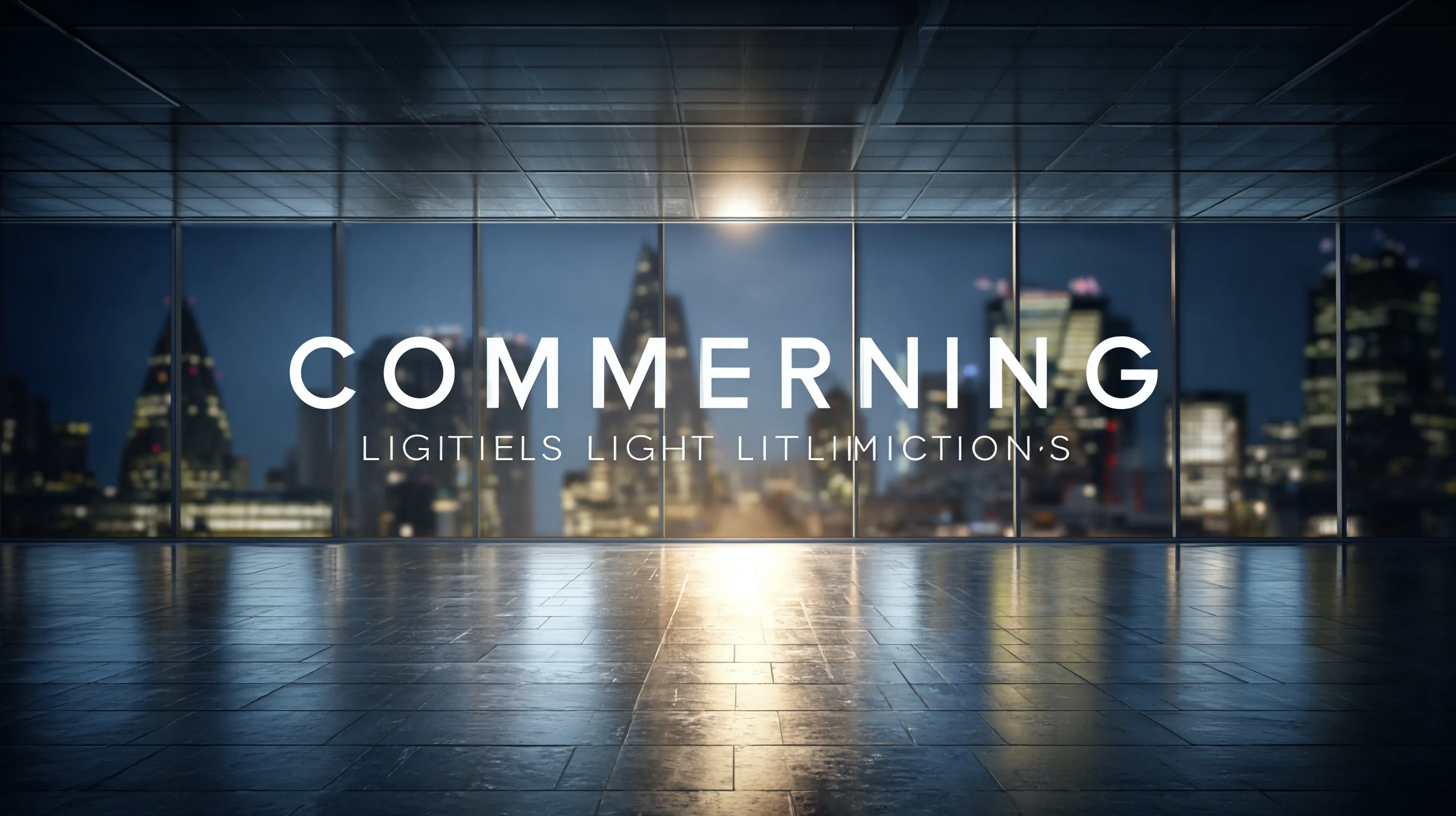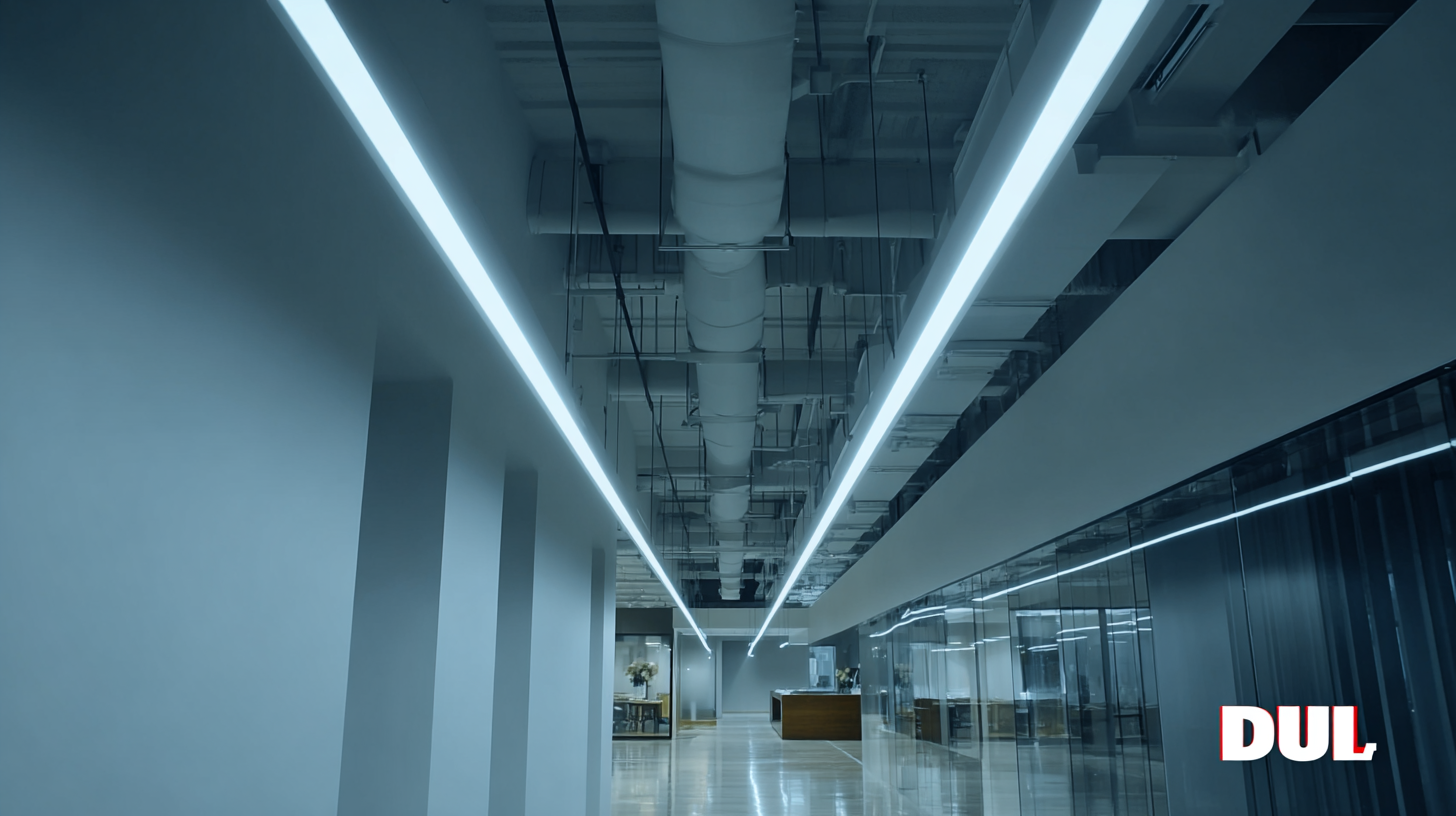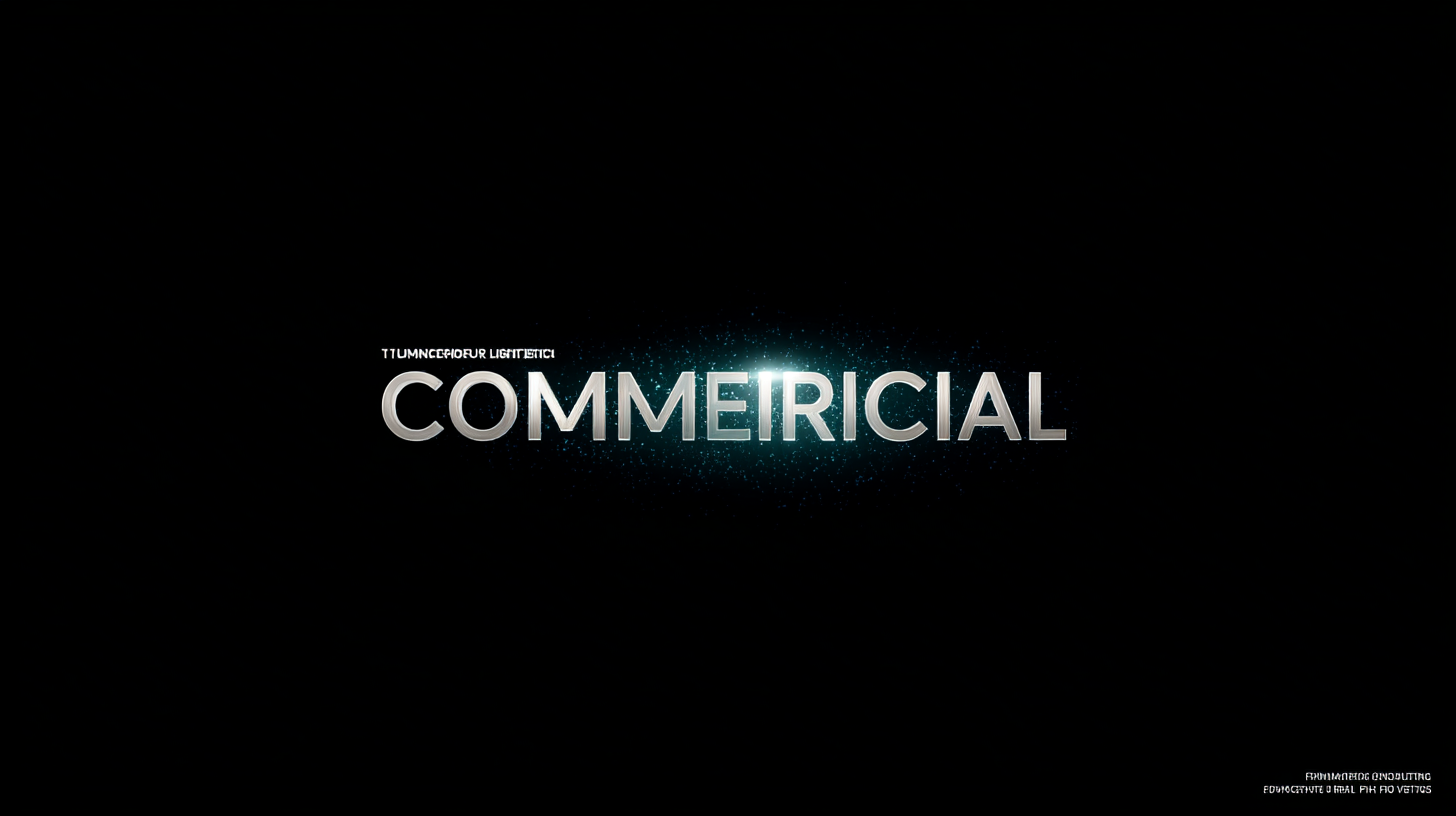The Future of Best Commercial Lighting Innovations and Insights for 2025
As we look towards 2025, the landscape of commercial lighting is set to undergo transformative innovations bolstered by technological advancements and a growing emphasis on sustainability. According to a report by Grand View Research, the global commercial lighting market is projected to reach $90.4 billion by 2027, growing at a compound annual growth rate (CAGR) of 6.6%. This surge is driven by an increasing demand for energy-efficient solutions, smart lighting systems, and automation technologies that enhance both functionality and ambiance in commercial spaces. Moreover, a study by MarketsandMarkets highlights that the smart lighting segment alone is expected to grow from $20 billion in 2020 to $64 billion by 2026, reflecting a significant shift towards intelligent and adaptive lighting solutions. In this blog, we will explore the future trends, innovative technologies, and practical insights that will shape commercial lighting in the coming years, ensuring businesses are equipped for the evolving demands of energy efficiency, aesthetic appeal, and user-centric design.

Emerging Trends in Commercial Lighting: What to Expect in 2025
The commercial lighting industry is poised for significant transformation as we approach 2025, with promising trends that focus on innovation and sustainability. According to a report by TrendForce, the global LED lighting market is set to rebound, primarily fueled by the demand for LED replacements amid renovations. This shift indicates a robust growth trajectory, projecting the commercial LED lighting market to reach an astonishing valuation of $27.38 billion by 2030. This growth not only reflects the increasing adoption of LED technology but also showcases a heightened emphasis on energy efficiency and reduced operational costs.
Emerging trends for 2025 highlight the integration of smart lighting solutions, which offer customizable features that enhance operational flexibility and energy management. Businesses are increasingly recognizing the value of retrofitting existing lighting systems to achieve advanced functionality without the need for complete overhauls. Alongside this, design aesthetics are evolving, with trends such as chrome finishes and Wabi-Sabi-inspired fixtures gaining traction. These innovations collectively signal a paradigm shift in commercial lighting, focusing on both functional performance and design elegance, ensuring that businesses can meet the demands of modern consumers while driving sustainability initiatives forward.

Smart Lighting Solutions: Integrating IoT for Enhanced Efficiency
As we look forward to 2025, the integration of smart lighting solutions powered by the Internet of Things (IoT) is set to revolutionize the commercial lighting landscape. The traditional lighting systems are gradually being replaced by intelligent designs that not only enhance aesthetic appeal but also optimize energy consumption. With sensors and connected devices, businesses can monitor and adjust lighting in real-time based on occupancy and natural light availability, significantly reducing operational costs.
Moreover, these smart lighting systems facilitate advanced data analytics, enabling companies to make informed decisions about their energy usage and maintenance schedules. For instance, predictive analytics can forecast when a bulb is likely to fail and suggest replacements, thereby minimizing downtime. Additionally, the seamless integration with other IoT-driven systems, such as climate control and security, allows for a unified approach to building management, fostering both efficiency and sustainability. As we embrace these innovative solutions, the future of commercial lighting will not only be about illumination but also about creating smarter and more responsive environments.
The Future of Best Commercial Lighting Innovations and Insights for 2025 - Smart Lighting Solutions: Integrating IoT for Enhanced Efficiency
| Innovation | Category | Description | Benefits | Projected Adoption Rate (%) |
|---|---|---|---|---|
| Smart Sensors | IoT Integration | Sensors that detect occupancy and adjust lighting accordingly. | Energy savings, enhanced comfort, improved security. | 75 |
| Automated Control Systems | Management Solutions | Centralized systems to manage multiple lighting sources efficiently. | Convenience, flexibility, and reduced operational costs. | 80 |
| LED Technology Advancements | Lighting Technology | Next-gen LEDs with better efficiency and color rendering. | Lower energy consumption and longer lifespan. | 90 |
| Human-Centric Lighting | Wellbeing | Lighting solutions that adapt to natural light patterns. | Improves mood, productivity, and health. | 65 |
| Wireless Lighting Systems | Installation Ease | Lighting that can be installed and controlled without wires. | Flexibility in design, reduced installation costs. | 70 |
Sustainable Lighting Innovations: Eco-Friendly Options for Businesses
As businesses increasingly prioritize sustainability, eco-friendly lighting innovations are at the forefront of commercial lighting solutions. According to the U.S. Department of Energy, lighting accounts for approximately 15% of total electricity consumption in commercial buildings. This presents a significant opportunity for businesses to reduce their carbon footprint through the adoption of energy-efficient technologies. The integration of LED lighting, which uses up to 75% less energy than traditional incandescent bulbs, is becoming more prevalent, not only for its efficiency but also for its longevity, lasting up to 25 times longer.
In addition, sustainable lighting options such as solar-powered lights and fixtures made from recycled materials are gaining traction among businesses committed to environmental stewardship. A report by MarketsandMarkets estimates that the global solar lighting market is projected to grow from $4.5 billion in 2020 to $5.8 billion by 2025, reflecting a strong shift towards harnessing renewable energy sources. These innovations not only minimize environmental impact but also enhance the overall aesthetic of commercial spaces, creating a positive atmosphere for both employees and customers. As we look to 2025, the convergence of sustainability and technology in commercial lighting will define the industry’s trajectory, aligning business practices with a growing demand for eco-conscious solutions.
The Future of Best Commercial Lighting Innovations and Insights for 2025
This chart illustrates the adoption rates of various sustainable lighting innovations expected to be implemented by businesses in 2025. The data highlights the increasing trend towards eco-friendly options in commercial lighting.
AI-Powered Lighting Design: The Future of Customization and Automation
As we move towards 2025, the integration of AI-powered lighting design stands out as a transformative force in the commercial lighting sector. According to a recent report by Research and Markets, the global smart lighting market is projected to reach $82.4 billion by 2025, demonstrating a CAGR of 20.1% from 2020 to 2025. This explosive growth is driven by advancements in automation and the demand for smart, customizable solutions that enhance energy efficiency and user experience.

AI technology in lighting design enables unprecedented levels of customization and automation, providing businesses with the ability to tailor their lighting systems to specific needs. A study by McKinsey & Company highlights that companies utilizing AI solutions in their operations have seen an increase in productivity by 20-30%. By analyzing real-time data, AI can adjust lighting in response to occupancy, time of day, and even user preferences, creating an adaptive environment that improves overall ambiance and comfort.
Moreover, the environmental impact of AI-driven smart lighting cannot be understated. The International Energy Agency predicts that smart lighting can reduce energy consumption by up to 60% compared to traditional systems. This not only helps companies lower operational costs but also contributes significantly to sustainability efforts, making AI-powered lighting design a vital component of future commercial spaces.
Importance of Human-Centric Lighting in Commercial Spaces for Well-being
In the evolving landscape of commercial lighting, the emphasis on human-centric design is becoming increasingly crucial. As we move towards 2025, businesses are recognizing the important role that lighting plays in enhancing the well-being and productivity of their employees. By prioritizing lighting systems that mimic natural light patterns, commercial spaces can create environments that boost mood, reduce stress, and promote overall health. Human-centric lighting not only improves employee satisfaction but can also lead to increased efficiency and creativity in the workplace.

Moreover, the integration of advanced lighting technologies, such as tunable white LEDs and smart control systems, allows businesses to personalize lighting according to the specific needs of their occupants. This adaptability is essential in a diverse work environment, where different tasks may require varied lighting conditions. By focusing on the human aspects of lighting design, businesses can foster a more inviting and functional atmosphere, ultimately leading to a more engaged and empowered workforce. As we approach 2025, the commitment to human-centric lighting will undoubtedly reshape commercial spaces, making them not only more efficient but also more attuned to the well-being of their inhabitants.
